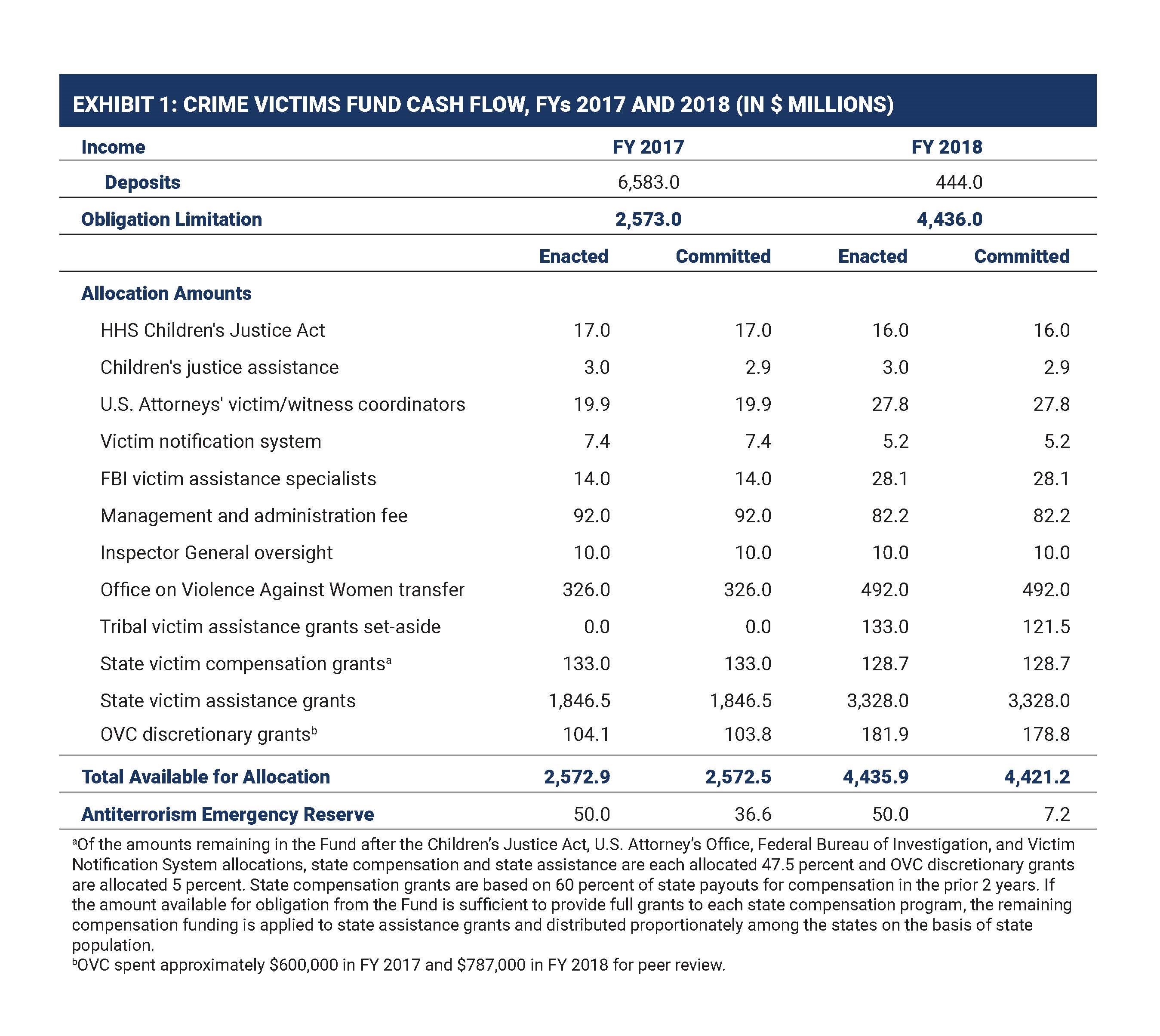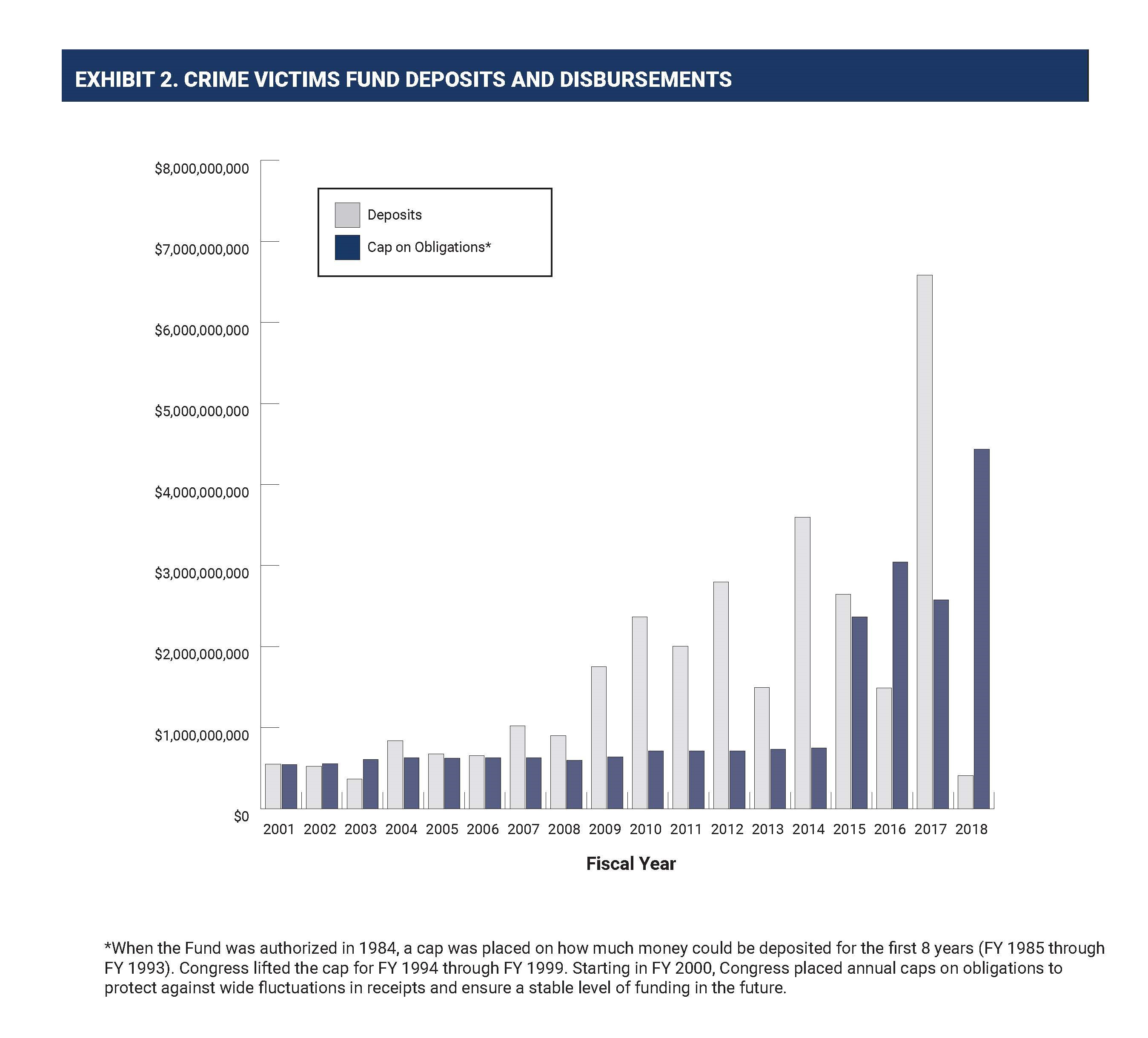The Crime Victims Fund
The Crime Victims Fund (the Fund), established by the Victims of Crime Act of 1984, supports services for victims of crime throughout the Nation. OVC is charged by Congress with administering the Fund, which is composed primarily of fines, special assessments, and bond forfeitures from convicted federal offenders, making it a self-sufficient source of compensation and assistance that does not rely on Americans' tax dollars. The Fund supports thousands of programs annually with millions of dollars invested in services provided directly to crime victims. These programs provide compensation and assistance to those who have suffered physical, emotional, and financial harm from victimization.
Main Sources of Revenue
Deposits into the Fund consist of—
- criminal fines from convicted federal offenders, with exceptions for funds related to certain environmental, railroad, unemployment insurance, and postal service violations;
- forfeited appearance bonds from convicted federal offenders;
- special forfeitures of collateral profits from crime;
- special assessments for individuals and corporations convicted of federal crimes; and
- gifts, donations, and bequests by private parties.
FYs 2017 and 2018 Fund Deposits
The fiscal years (FY) 2017 and 2018 reporting period saw the largest total deposits in the Fund's history. More than $6.5 billion was deposited into the Fund in FY 2017, which made it the largest total deposit recorded since the Fund became operational in 1985. Coupled with $403 million in FY 2018 deposits, the Fund received nearly $7 billion during the reporting period to support victims of crime.
Appropriation Cap and Allocation Process Determine Available Funds
Beginning in 2000, in response to large fluctuations in deposits, Congress placed an obligation limit on funds available for distribution. This limit, also known as the appropriation cap, ensures that the Fund remains a stable source of support for future services. In FYs 2017 and 2018, the appropriation cap was set at $2.573 billion and $4.436 billion, respectively—the largest amounts since the cap was instituted. The increased funding limits enabled states to dramatically expand their support for both new and existing local victim service programs.
For more information about VOCA compensation and assistance, including the allocation process established by Congress, see the Crime Victims Fund. State-by-state allocations for VOCA Compensation and Assistance for 2017 and 2018 are also available on the OVC website.






